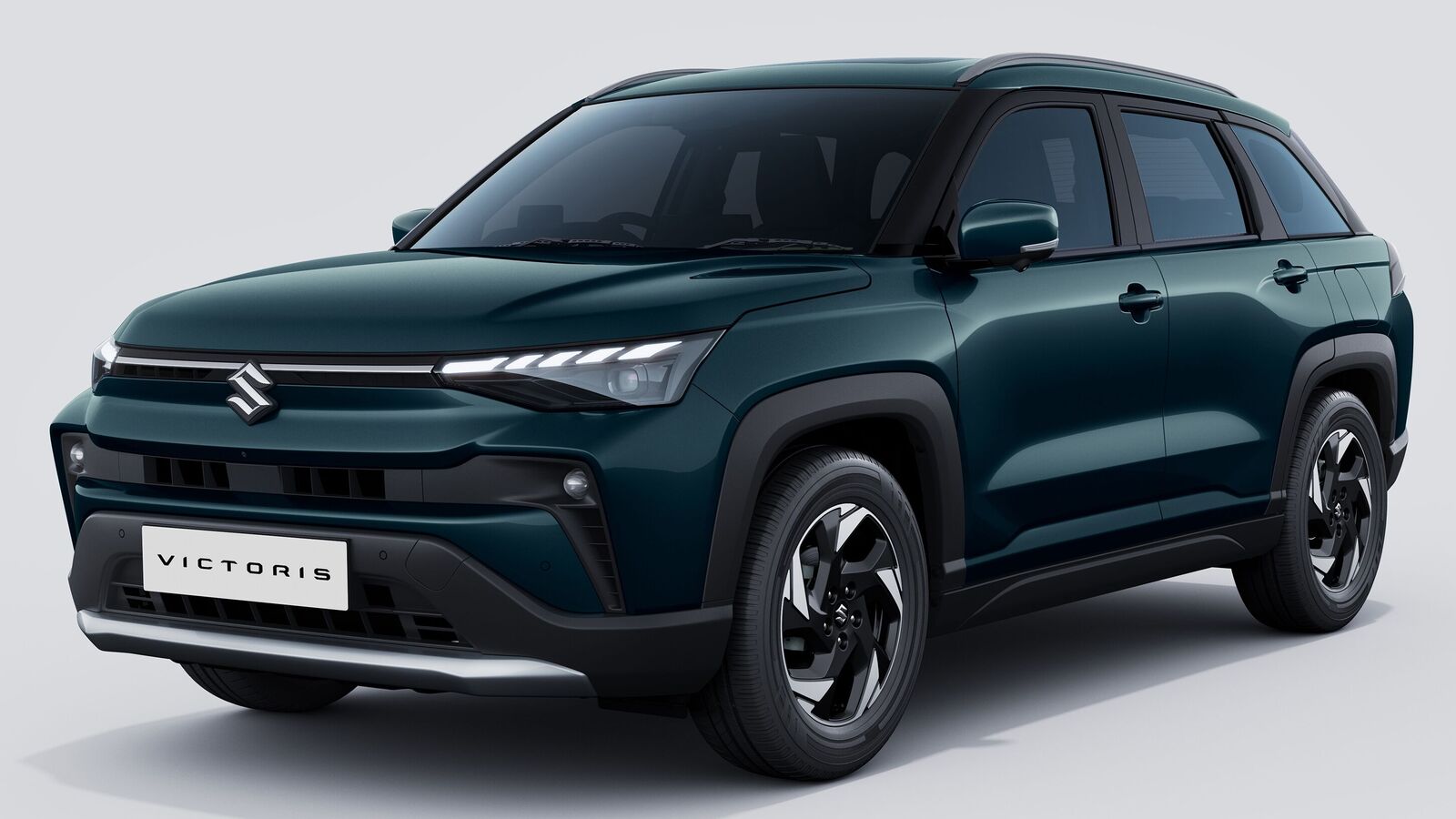04 September 2025

After seven painful months of decline, the French new-car market finally recorded growth in 2025. This was driven by battery-electric vehicles (BEVs) and hybrids. But is the former powertrain really in a sweet spot, or are incentives and regulations swaying results? Autovista24 journalist Tom Hooker investigates.
New-car registrations in France increased by 2.2% year on year in August to 87,850 units, according to the PFA. This was despite one less working day in the month compared to August 2024. It marked the country’s first year-on-year growth in 2025 and the best improvement since April 2024.
Despite this, the long-term rental sector endured a 20% decline, while fleet registrations dropped by 8%, according to AAA Data. Deliveries attributed to private individuals fell as well, down 3%. Conversely, short-term rental registrations surged by 49%.
‘It should be remembered, however, that the basis of comparison in August 2024 was particularly low,’ highlighted AAA Data head of automotive market analysis Marie-Laure Nivot.
‘The general trend, therefore, remains very negative, with no prospect of a turnaround before the return of electric leasing from 30 September, which should add 50,000 cars to the overall balance sheet for the year,’ she commented.
New-car volumes were still down by 7.1% from January to August, with 1,046,421 models taking to French roads.
A breakthrough for BEVs?
BEV volumes soared by 29.3% year on year last month, according to Autovista24 calculations. This marked the second consecutive month of double-digit growth, after a strong July.
The technology posted 16,993 sales in August, claiming a 19.3% market share. This ensured a significant rise from the 15.3% share recorded at the same point last year.
However, BEVs have still not escaped the red in the cumulative 2025 figures. Deliveries lagged last year’s sales total by 2%, with 184,872 sales. BEVs accounted for 17.7% of total registrations from January to August. This was up from 16.7% one year ago.
Complex puzzle for French fleets
The fleet sector proved the main catalyst for BEV growth in August. In this corner of the market, BEVs recorded a 57% uptick in deliveries, according to AAA Data. This meant the powertrain made up 24% of the channel’s overall volumes.
‘Fleet users have seen tax rates increase for all vehicles. But, since February 2025, BEVs have benefited from a benefit-in-kind deduction of 70%. This is compared to a 50% deduction before February,’ explained Ludovic Percier, Autovista Group’s senior RV analyst for France.
‘As a result, all-electric models are now only slightly more expensive for fleet users. Meanwhile, internal-combustion engine (ICE) vehicles face a much sharper rise in costs without any deductions. This means that BEVs remain a beneficial choice for both fleets and fleet users relative to ICE-powered cars, despite the overall increase in taxation,’ he added.
The Loi d’Orientation des Mobilités law outlines the required electrification quotas for companies, leasing and rental firms managing fleets of over 100 light vehicles. This has further hampered the ICE market and pushed more demand towards BEVs.
‘Since July 2024, 20% of new vehicles purchased must be low-emission vehicles, specifically either an electric vehicle (EV) or a hydrogen model. This threshold is up from 10% in 2022 and will rise to 40% in 2027,’ Percier outlined.
Instant incentive impact for BEVs?
The private sector witnessed a 1% downturn in BEV deliveries. This is an improvement compared to a 15% fall in July. Before this, the channel suffered even steeper all-electric sales drops of 30% in June and 58% in May.
The ‘electric private vehicle boost’ incentive was introduced on 1 July. It provides slightly more favourable subsidies compared to the previous bonus scheme, while keeping the same eligibility criteria.
There will be €3,100 available for households whose tax income is above €16,300 when they purchase an EV. For the lowest-income households, €4,200 will be offered.
So, it may seem that the new incentives have had an instant impact. Yet, on closer inspection, the slowing decline of BEVs in the private sector is not that simple. In fact, the reason behind the powertrain’s comeback may explain France’s wider new-car market struggles.
‘BEV incentives have seen an overall declining trend in terms of the funds available since July 2021. Moreover, since early 2024, all-electric models are required to have a low carbon footprint in the whole production process to be granted the bonus. This takes away almost all the non-European-produced cars,’ said Percier.
A wider market effect
‘The only realistic positive for private buyers is that carmakers are finally offering cheaper BEV models in smaller segments. These are still considered expensive compared to other powertrains, but they are getting more affordable and appealing over time,’ he added.
‘Overall, the all-electric market is being driven by increased taxes on ICE vehicles and laws forcing companies to buy BEVs. This is either to meet regulated quotas or to avoid much higher taxation.
‘In turn, this is causing registration declines across all other powertrains. The fleet channel alone represents around 50% of the French new-car market.
‘Fleets do not want to change their vehicles to be under the new regulation with higher taxes. So, they are increasing the length of the leasing contract. Private buyers are keeping their cars for longer, as they do not know which powertrain to choose.
‘These factors are keeping registration numbers 7.1% down on the cumulative 2024 figures,’ summarised Percier.
Hybrids help registration growth
The hybrid market, which includes full and mild hybrid volumes, saw a similar improvement. Registrations increased by 30% year on year to 39,721 units in August, according to Autovista24 calculations. Its market share consequently grew from 35.5% to 45.2%.
From January to August, hybrid sales rose by 30.5%, with 469,127 new models delivered. It remains the only powertrain ahead of its cumulative 2024 figure, showing the frightening state of the new-car market. In fact, the technology’s 109,593-unit gain is not even enough to balance out petrol’s volume loss alone.
Hybrids currently represent 44.8% of total new-car volumes in 2025, up 12.9 percentage points (pp) year on year. It has distanced itself at the head of the market, ahead of petrol by 22pp. One year ago, the fuel type trailed hybrids by 0.1pp.
Head-scratching PHEV performance
While BEVs and hybrids enjoyed a strong August, plug-in hybrids (PHEVs) recorded another decline.
The technology, which has not managed a single month of growth in 2025, suffered a 5% sales drop. However, this was its smallest decline so far this year. Its 5,855-unit total translated to a 6.7% market share, down 0.5pp compared to August 2024.
The technology’s year-to-date performance was dampened by sharp declines from the start of the year. It endured a 28.8% slump across the first eight months of 2025, with 63,419 units, according to Autovista24 calculations. PHEVs captured 6.1% of the country’s new-car market, down from 7.9%.
So, while HEV volumes are increasing and BEV registrations are reaching stability in the cumulative figures, why are PHEVs struggling?
‘Petrol and diesel volumes are decreasing in favour of BEV and HEV models, but not PHEVs. This is mostly because fleets are not interested in the technology anymore, even with a higher range of roughly 100km for new models. This explains the double-digit PHEV decline so far this year,’ highlighted Percier.
EV registrations drop
The EV market, which combines BEV and PHEV figures, is being pushed down by the latter powertrain’s decline. EV sales fell by 10.6% from January to August, with 248,291 units, according to Autovista24 calculations. This equated to a 0.9pp year-on-year drop in market share to 23.7%.
However, things looked much brighter in August alone. EV volumes improved by 18.3% in the month, with 22,848 deliveries. The powertrain grouping made up 26% of total registrations, its highest share so far this year. This was a 3.5pp rise from its market hold in August 2024.
Adding hybrids to EV volumes, the electrified market managed growth in both the monthly and cumulative figures. The powertrain grouping enjoyed a 25.5% surge in August. Its market share jumped to 71.2%, according to Autovista24 calculations.
Across the first eight months of 2025, electrified deliveries were up by 12.6% to 717,418 units. As the rest of the new-car market declined, the grouping’s share has unsurprisingly increased from 56.5% to 68.6%.
Hopeless ICE market
Registrations of petrol-powered cars continued to drop in August. The fuel type suffered a 32.4% fall to 18,323 units, according to Autovista24 calculations.
This marked its 18th consecutive month of double-digit decline. Consequently, its market hold declined by 10.6pp to 20.9%, matching its lowest share of the year so far recorded in April.
In the year to date, petrol deliveries slumped by 33.5%, to 238,089 units. It represented 22.8% of the new-car market from January to August, down 9pp compared to one year ago.
The diesel market faced the same fate as its ICE sibling. Volumes dropped by 26.9% in August, according to Autovista24 calculations. This was its 14th consecutive month of double-digit decline. The fuel type’s total of 4,289 deliveries translated to a 4.9% market share, down 1.9pp year on year.
After eight months of 2025, 52,595 new diesel-powered cars were delivered to customers, a 40.1% slump. In turn, its market share slipped from 7.8% to 5%.
Combining the performance of petrol and diesel models, the ICE market saw a 31.4% sales drop in August. This meant the pair captured 25.7% of overall volumes, 0.3pp behind the EV market.
The powertrain grouping suffered a 34.8% decline from January to August. This was reflected in its market share, which fell from 39.6% to 27.8%.





